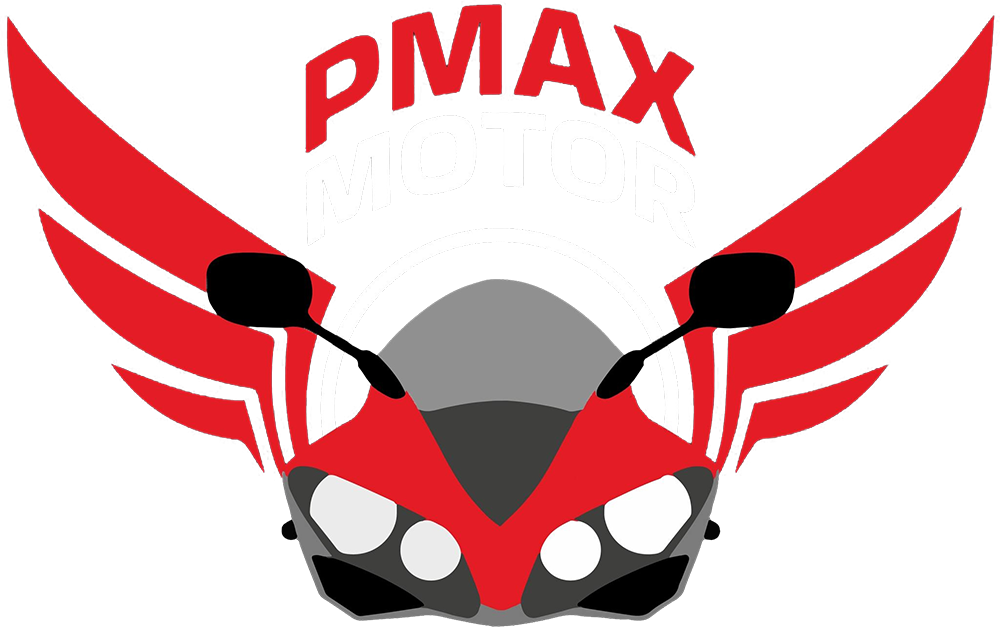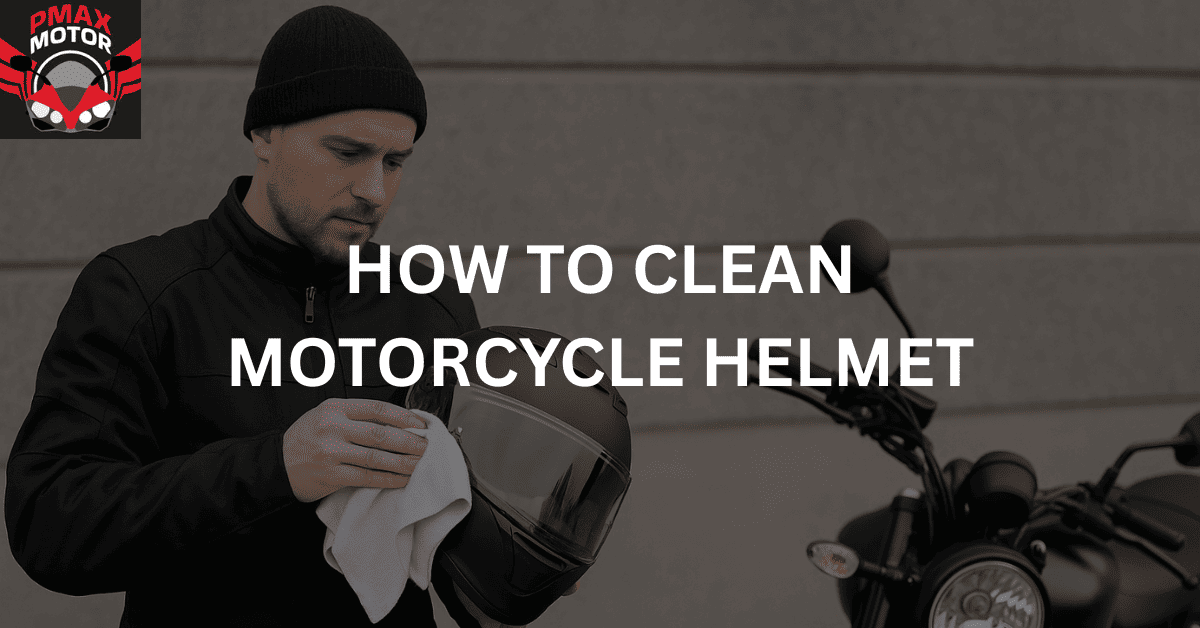No products in the cart.
How to Clean Your Motorcycle Helmet Without Damaging It
The best way to clean your motorcycle helmet is to remove the inner padding, wash it by hand with gentle soap, wipe the shell using a soft cloth, and air-dry every component fully.
At least, that’s the TLDR version.
Malaysia’s heat, rain, and humidity can quickly turn your helmet into a breeding ground for bacteria, odour, and mould. Riders who sweat often or commute daily know the struggle of foul-smelling liners or fogged-up visors.
The good news? Helmet maintenance doesn’t require specialised equipment, just the right method.
This blog is here to show you exactly how to clean your motorcycle helmet the right way. No rough sponges or using your old clothes as a makeshift cloth, let’s clean it well.
Table of Contents
ToggleHow to Clean Your Motorcycle Helmet: Step-by-Step
1. Remove the Interior Padding First
Always start by taking the helmet apart, gently and correctly.
Most full-face and modular helmets sold in Malaysia (including Gracshaw, KYT, ARC) feature removable liners and cheek pads. These components are designed for easy cleaning and should come out with minimal force.
Look for snap buttons, Velcro, or slotted grooves depending on the helmet model.
- If you’re unsure about the removal points, refer to the manual or QR code instructions (common in newer helmets).
- Avoid yanking or bending foam sections, especially at stress points near the chin bar or rear padding.
Why it matters: Cleaning liners separately prevents moisture from reaching the inner shell, EPS foam, or built-in electronics (such as intercom systems). It also helps preserve the helmet’s structural integrity over time.
2. Hand-Wash the Padding with Mild Soap
Machine washing ruins the foam. Use your hands and the right soap.
Your helmet padding is made of absorbent, impact-dampening foam wrapped in moisture-wicking fabric, delicate enough to be damaged by spin cycles or harsh cleaners.
Here’s the safe way to wash it:
- Fill a basin or bucket with lukewarm water
- Add a few drops of baby shampoo or a helmet-safe interior cleaner
- Submerge the padding and massage gently to loosen sweat, oil, and dirt
- Soak for around 10 minutes to allow full saturation
- Rinse under running water until no soap residue remains
- Gently press out water (no twisting) and lay flat on a clean towel to air-dry
Avoid:
- Detergents, bleach, or fabric softener
- Hot water (above 40°C)
- Tumble dryers or direct sun
Tip: For faster drying in humid conditions, place the towel-wrapped padding near a fan in a shaded area.
3. Wipe the Helmet Shell with a Soft Cloth
The shell is durable, but the coating is not. Handle with care.
Use a clean microfibre cloth lightly dampened with water or a helmet-specific exterior spray. Wipe in gentle circular motions to lift off dirt without scratching the paint or logo finishes.
If you’re dealing with bug splatter, tree sap, or oily grime:
- Soak a soft cloth in warm water and leave it resting over the affected area for 5–10 minutes
- This helps soften residues before wiping, no need to scrub harshly
Avoid the following at all costs:
- Solvents like acetone, alcohol, or thinner (they degrade polycarbonate shells)
- Abrasive tools like kitchen scourers or steel wool
- Fully submerging the helmet (can damage glued parts and electronics)
Why it matters: The outer shell isn’t just for looks, it absorbs impact. Keeping it clean protects both its function and lifespan, while avoiding invisible damage that could compromise safety.
4. Clean the Visor Separately and Gently
Scratches on your visor don’t just affect clarity, they reduce safety.
Visors are made from polycarbonate or similar clear polymers with anti-scratch or anti-fog coatings. These coatings can easily be damaged by improper handling.
Start by removing the visor from the helmet if the design allows (most full-face helmet do). Then follow these steps:
- Rinse it gently with clean water to remove dust and grit (don’t wipe while dry)
- Use a soft microfibre cloth or visor-specific cleaning wipes
- Apply a visored-safe spray cleaner (never household glass cleaner)
- Wipe in straight, light strokes, avoid circular rubbing on dry surfaces
For visors with anti-fog coating (usually on the inside):
- Do not touch or clean unless the manual explicitly states it’s washable
- Use only products recommended by the helmet brand
Why it matters: Small scratches scatter light and reduce visibility, especially during night rides or rain. A clear visor = safer decision-making on the road.
5. Brush Out Vents and Clean the Chin Strap
These often-overlooked parts collect the most hidden grime.
Air vents, intake slits, and exhaust channels trap dust, oil particles, and road dirt, especially in Malaysian traffic or during the rainy season. The chin strap absorbs sweat and odour.
Clean them with care:
- Use a soft brush, paintbrush, or old toothbrush to dislodge buildup from vents and crevices
- For the chin strap, use a damp cloth with mild soapy water and gently scrub the fabric
- Wipe down the D-ring or ratchet mechanism if present, then dry with a towel
Do not use excessive water or soak these areas, as moisture could seep into the EPS foam beneath the outer shell.
Why it matters: Unclean straps can cause skin irritation or unpleasant odours, while blocked vents compromise ventilation and rider comfort.
6. Dry All Parts Completely Before Reassembly
Moisture left behind = mildew, bacteria, and foul odour later.
Once all parts are clean, allow each component to air dry naturally. This prevents trapped humidity from weakening adhesives, warping materials, or growing bacteria inside the helmet.
Drying checklist:
- Place the outer shell upside down on a dry towel to allow full air circulation
- Lay the padding flat in a shaded area, ideally under a fan or near open airflow
- Ensure the visor dries streak-free by placing it upright or hanging it gently
Avoid these mistakes:
- Do not place any part under direct sunlight (UV exposure damages plastic and foam)
- Never use a hair dryer, heater, or blower, overheating breaks down EPS foam
Drying time:
- Padding: 6–10 hours (depending on humidity)
- Shell and visor: 1–2 hours
Important: Only reassemble when every part feels fully dry to the touch.
How Often Should You Clean Your Helmet in Malaysia?
Riding Frequency | Suggested Cleaning |
Daily commuter | Every 2 weeks |
Weekend rider | Monthly |
In heavy rain | After drying |
Rare use | Every 2–3 months |
Humidity accelerates sweat breakdown and odour. If your helmet smells or causes itchiness, it’s overdue.
Recommended Products for Helmet Cleaning (2025 Malaysia)
Product | Best For | Price (RM) | Notes |
Motul Helmet Interior Clean | Fast anti-bacterial cleaning | ~28 | Safe for daily use |
Visor Cleaner by Oxford | Visor & shell spray | ~25 | No streaks |
Microfibre Cloth 2-Pack | All surfaces | ~12 | Machine washable |
Baby Shampoo (any brand) | Padding wash | ~5–10 | Non-irritating |
How Do You Know When It’s Time to Replace a Helmet?
Cleaning helps, but it won’t fix structural wear. Even with proper maintenance, helmets don’t last forever. Key signs it’s time to replace include:
- Cracked or compressed EPS foam
- Loose or non-snapping padding
- Damaged or scratched visor reducing visibility
- Faded outer shell or compromised ventilation
- It’s more than 5 years old, especially if worn frequently
We always recommend checking manufacturing dates stamped inside your helmet, and upgrading if there’s visible wear or any doubt in its integrity.
Conclusion: Clean Helmets Last Longer and Feel Better
At Pmax, we’ve seen too many good helmets prematurely retired due to poor maintenance. That’s why we advocate for proper, routine cleaning , not just to keep your gear looking fresh, but also to make sure it continues performing the way it should.
If your current helmet motor has seen better days, we also stock replacement liners, visors, and full helmet from trusted brands like Gracshaw, ARC, and KYT, ready for riders who care about quality without overspending.
Frequently Asked Questions How To Clean Your Motorcycle Helmet
What’s The Safest Way To Clean Helmet Padding?
Remove the padding and hand-wash with mild shampoo in lukewarm water. Let it air dry fully.
Can I clean my helmet with Dettol or alcohol?
No. Avoid harsh chemicals, they can damage the shell, visor, and foam.
How Often Should I Clean My Motorcycle Helmet?
Clean every 2 weeks if you ride daily, and monthly for occasional use.
What’s The Best Cleaner For Motorcycle Visors?
Use visor-specific sprays or water. Avoid general glass cleaners or alcohol-based products.
Can I Dry Helmet Parts Under The Sun?
No. Sunlight can warp the foam and damage adhesives. Always dry in shade.
Are All Helmet Liners Removable?
Most full-face and modular helmets have removable liners. Check your model’s manual for instructions.



